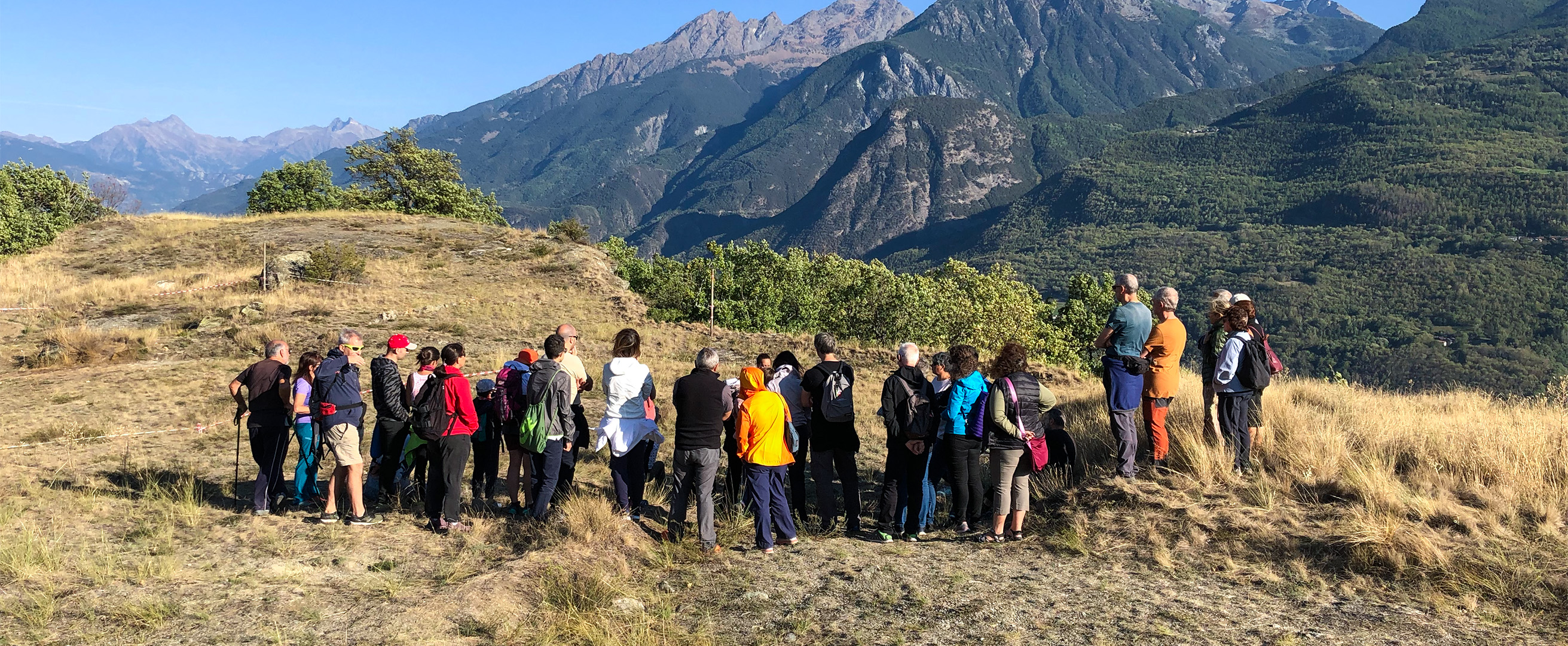07/12/2022 | Partner: Regione Valle d'Aosta
A journey through time: Prehistory in Valle D’Aosta
For a voyage back through the millennia in Valle d’Aosta, a new Prehistory Circuit is being organised as part of the PITEM Pa.C.E. – Alcotra Programme 2014/2020 project. Once this Circuit is operational, an array of cultural insights, images and QR codes will inform visitors. In the meantime, however, there are many archaeological sites already available to see fascinating evidence of prehistoric Man’s presence.
The oldest archaeological site to have been discovered in the Valley is known as MF1 and is located on the slopes of Mont Fallère in the Municipality of Saint-Pierre. By analysing numerous traces, archaeologists determined that people have lived in Valle d’Aosta since the Mesolithic era. This indicates that hunter-gatherer tribes travelled in the Valle d’Aosta area around 9000 years ago, climbing over the steep mountain slopes in search of wild animals. And even subsequently, humans made use of the mountain area of Mont Fallère, as shown by various discoveries that reveal seasonal moving of livestock between higher and lower pastures (vertical transhumance) starting from the fourth millennium BC.
The most significant necropolis in Valle d’Aosta dating back 6500 years was discovered in 1968 on a rocky knoll overlooking the river Dora Baltea in the municipality of Quart. This was in the Neolithic era, an ancient time when agriculture and livestock farming first appeared. Archaeologists excavated some 60 tombs, yielding some truly intriguing grave goods including jewellery, necklace components and a beautiful bracelet made with a Glycymeris shell, which suggests they were travellers from the sea. Continuing the research in the vicinity of the necropolis led to discovering ceramic fragments from other archaeological strata. These provide clues about the daily activities of a potential settlement that may have been established much later, during the period called the Middle Bronze Age.
Another important Valle d’Aosta necropolis from the Neolithic era was discovered in 1917, during the construction of the hydroelectric power plant at Champrotard in the Municipality of Villeneuve. Workers unearthed an exceptional treasure: 25 stone burial chambers (cists). The grave goods contained turned out to be very rare, but a number of everyday items found in the adjacent strata, including an axe, a scraper, an awl and even a wild boar’s tooth used for ornament, imply funerary rituals that were repeated throughout time and certainly connected to the necropolis.

Also relating to the Neolithic funerary world of about 6500 years ago, at Préle in the Municipality of Donnas, two recently discovered burial chambers are notable for the “mysterious” absence of any human remains. These stone tombs (cists), similar to those found in Vollein and Champrotard, are distinctive because they are empty and topped by a rock. What could have happened to the human remains and grave goods that may have been inside them? Were they plundered in ancient times or perhaps never used?
By stepping into the shoes of early humans, we are aware that, in addition to a reverence for the dead and their journey in the afterlife, artistic representations such as engravings and paintings show they had strong feelings of ethnic and cultural identity as well as religious practices full of meaning. This is what we can perceive and decipher from the groupings of symbolic figurations depicted in the carvings on the rock surface next to the funerary area, which probably date back to the Neolithic and Bronze Age. Apart from around the necropolis of Vollein, some magnificent rock carvings dated between the 5th and 3rd millennia BC have also been found in Chenal, Montjovet, close to Chenal Castle. These carvings demonstrate how Valle d’Aosta has been a region of key importance from the Neolithic period to the present day. Images that are probably idols – defined as eyes with eyelashes and double spiral pendants – stand out among geometric figures and anthropomorphic representations and are comparable to similar engravings found in Brittany and Spain.
Partner: Regione Valle d'Aosta
Sito di riferimento:

